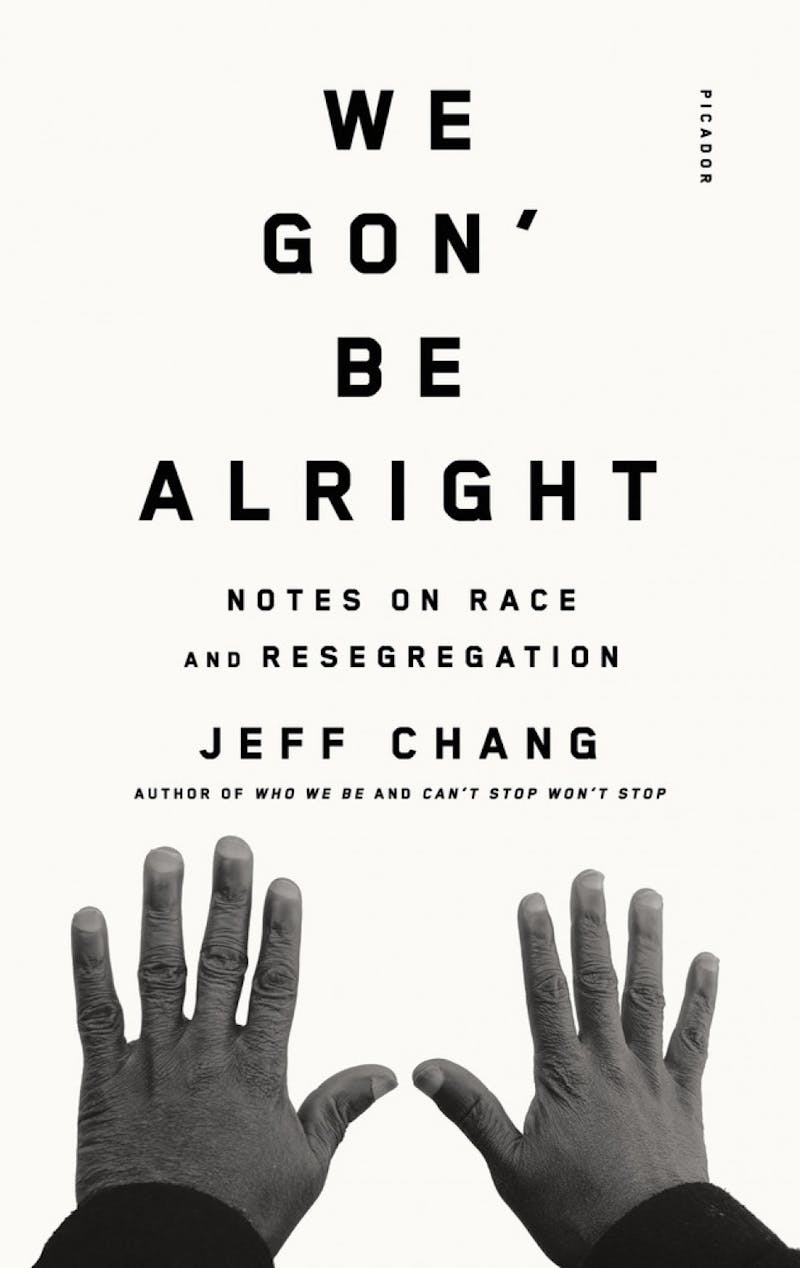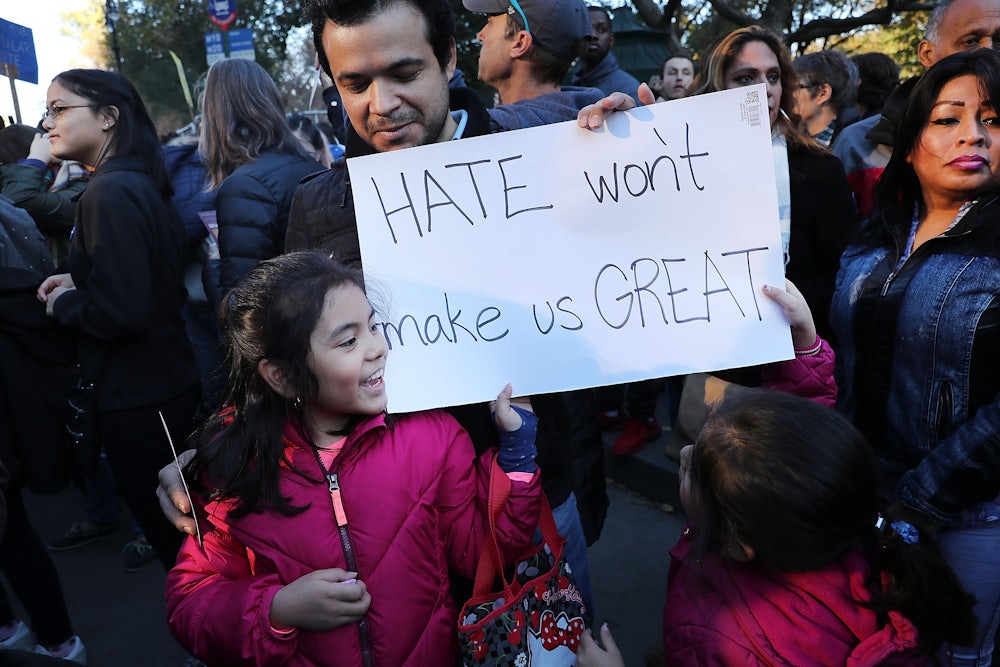Diversity is under siege in Donald Trump’s America. The nation’s first black president is being replaced by a white nationalist. Trump’s proposed cabinet has only one African American member, a neurosurgeon awkwardly shoehorned into the Housing and Urban Development slot. Education Secretary John King, who has championed efforts to increase socioeconomic and racial diversity in schooling is giving way to Betsy DeVos, who has backed private school vouchers, which have increased segregation in country after country where they’ve been tried. Jeff Sessions, a man rejected for a judgeship in the 1980s on account of racially insensitive remarks he made, is slated to replace Loretta Lynch, the nation’s first black female attorney general.

And that is just the beginning. Donald Trump will likely have the ability to nominate at least two Supreme Court justices, which will affect a whole host of policies, including affirmative action. In June, the Supreme Court narrowly saved racial diversity programs in higher education and just this fall it looked like Hillary Clinton would be in a position to establish the first liberal majority in a half century. That Court would have likely supported racial diversity programs, among many other progressive priorities. Now the equation has suddenly been reversed and explicit programs to count race in decision-making are likely to be in jeopardy.
For progressives, the pressing question is: How can diversity be re-imagined in the Trump era to give it political and legal resonance in the coming years? One answer may be to enlarge our concept of diversity—to include not just race and gender, but socioeconomic status as well.
Jeff Chang’s perceptive book, We Gon’ Be Alright: Notes on Race and Resegregation, is at once strongly supportive of efforts to promote diversity in education and employment and a critic of the ahistorical nature of the policy. Chang prefers the original justification for affirmative action programs as a remedy for years of brutal discrimination. But he is willing to live with diversity as the legal basis of affirmative action as outlined in 1978, when U.S. Supreme Court Justice Lewis Powell Jr. suggested that the educational benefits of diversity justified the use of race in admissions in the case of Regents of the University of California v. Bakke. Powell said racial diversity added to the educational experience of all students, just as geographic diversity and economic diversity do.
But over time, the concept of diversity took on a more specific meaning. Today, when people talk about diversity—in colleges and in the workforce—they usually are referring to race and gender rather than economic class. Sometimes, Chang notes, the term diversity is used awkwardly, as a synonym for people of color, as when the Academy of Motion Picture Arts and Sciences passed a plan “doubling the membership of women and diverse members.” Working-class whites from rural Pennsylvania would surely diversify the membership of the Academy but that is not what’s meant by “diverse members.”
Politically, this narrow framing of diversity holds major risks for progressives. Whites who struggle economically notice the slight because being able to add diversity to an institution increases one’s stock. Chang quotes the scholar Nancy Leong on the proposition that predominantly white institutions derive “social or economic value from associating with individuals with nonwhite racial identities.” Moreover, she writes, “in a society preoccupied with diversity, nonwhiteness is a valued commodity.” Chang cites the example of a white applicant who submitted a poem under an Asian pseudonym in an apparent “attempt to have his writing recognized by diversity-minded judges.”
Chang is not oblivious to class. He describes himself as a scholarship kid who served his “peers at the lunch line and wiped up after their cafeteria messes.” He understands Trump’s appeal to working-class whites who felt “ignored by elites” and looked for someone to “vocalize their anger and anxiety.” Chang also recognizes that some of Trump’s class appeal had less to do with his position on trade or Social Security and more to do with his willingness to directly challenge elites. Chang writes that Republicans “had become calcified with rules, protocols, etiquette. Trump descended from the air and the airwaves to talk shit.”
Despite these insights into the political geography of class, Chang, like many liberals, consistently turns a blind eye to class dynamics in his discussion of diversity and inequality. He’s more focused on the intricacies of racial diversity. He rejects the right-wing invocation of Asians as the model minority; there was “no Middle Passage” for Asians, as he puts it. While W.E.B. DuBois asked, “How does it feel to be a problem?” Chang retorts: “What does it mean to be the solution?” For Asians, “The Duboisian question is turned upside down.” To his credit, he rejects simple-minded invocations of the term “people of color” that gloss over the ways in which African Americans have been particularly disadvantaged in American society.
But when it comes to class, Chang shows little of the same nuance. Chang, now the executive director of the Institute for Diversity in the Arts at Stanford University, writes more from the perspective of Palo Alto than from that of the once striving scholarship student.
Take Chang’s discussion of affirmative action at elite universities. Research by Anthony Carnevale at Georgetown University finds that socioeconomic disadvantages predict an SAT score 399 points lower than that for advantaged students but that the residual racial difference between blacks and whites is 56 points. A fair system would reward strivers who have overcome odds. Yet research finds colleges do the opposite, providing large racial preferences and no preference whatsoever for low-income students. At top colleges, students from the richest quartile outnumber those from the poorest by 24 to one. It is not enough to simply assemble a class of relatively wealthy students of all races and call that genuine diversity.
Yet Chang is a strong supporter of this highly inequitable system and criticizes a powerful alternative policy used by the University of Texas at Austin to admit the top 10% of students in every high school. This policy resulted in higher levels of black and Latino representation than using race; and it opened the doors to economically disadvantaged students of all races who had not in the past attended the flagship university. Yet Chang is dismissive, noting that high school segregation makes the system work to produce racial diversity in higher education. But as Georgetown University professor Sheryll Cashin notes, place-based approaches help “those who are actually disadvantaged by structural barriers” rather than enabling “high-income blacks to claim the legacy of American apartheid.”
The blind spot to class comes up time and time and again. Consider, for example, the role of race, gender and class in determining financial awards to accident victims. The Washington Post recently noted the case of a four-year-old boy, poisoned by lead paint. The defendant landlord wanted to reduce damages because the boy is Hispanic, which statistics suggest will reduce his future earnings. This is rightly treated in the article as horrifying. As is a case where a girl receives fewer damages than a boy. But the family in the lead poisoning case argues that the boy has greater life earnings potential because the parents are college educated. The Post reporter doesn’t bat an eye. There is no discussion about whether that is fair.
Or consider employment discrimination laws. Employers found guilty of discrimination against workers based on race, sex, or national origin are subject to compensatory and punitive damages, as they should be. But an employee fired for trying to organize a union and join the middle class only gets back pay and reinstatement, a much less valuable remedy. A reform to apply civil rights remedies to discrimination against union organizing would help African American Clinton supporters and white Trump supporters alike, and might even remind them of their common interests, yet it is not part of the mainstream liberal agenda.
The irony here is that one of the most attractive features of American liberalism, its hallmark, is its commitment to inclusion—inclusion of racial minorities, women, gays and lesbians, religious minorities, and immigrants. Yet press reports show Hillary Clinton passed up efforts to reach out to hurting working-class whites. Instead, the group is seen by liberal media, says Chang, as “unseemly, irrational, embarrassing.”
Liberalism once had a bigger heart, both as a matter of political necessity and moral sensibility. Years ago, civil rights leader Bayard Rustin noted that lower middle-class whites were neither liberal nor conservative, they were both, and they would vote depending on how issues were presented to them. Dr. Martin Luther King Jr. also took an inclusive approach on affirmative action. King said we owed black people a debt to remedy an egregious history of discrimination, but that economically disadvantaged whites should be part of the program. King wrote: “It is a simple matter of justice that America, in dealing creatively with the task of raising the Negro from backwardness, should also be rescuing a large stratum of the forgotten white poor.”
Today, many progressives reject King’s framing, suggesting most white working-class voters are irredeemable. Some analysts pointed to strong evidence that Trump did indeed perform best with those harboring sexist and racist attitudes. But in politics, as in life, most individuals act on a complex mix of motivations. The fact that Trump won working-class white women by 28 percentage points and garnered the votes of many former Obama voters suggests many supporters probably voted for Trump despite his bragging about grabbing women by the genitals and his decision to question the citizenship of America’s first black president, not because of them.
Yes, we can be angry that these voters were willing to support a candidate who said hateful things about Muslims and Latinos and women, and suggest they were “unpersuadable.” But evidence suggests that many working-class voters were torn over whom to support and did not break Trump’s way until the Fall. Between August and November, Trump’s support among white non-college voters rose 23 points during a time when “the Clinton campaign stopped talking about economic change,” according to a report of the Democracy Corps and the Roosevelt Institute.
The lack of a consistent economic message, coupled with a cramped definition of diversity, appear to have helped Trump get away with one of the oldest and frequently successful tricks in American politics. “From Wallace and Nixon to Palin and Trump,” Chang notes, “the energies of anxious whites have been diverted from class uprising toward racial division.”
But it doesn’t have to be that way. In 1968, at a time of great racial tensions, Robert F. Kennedy won the hearts of working-class blacks and Latinos alongside working-class whites who had voted for George Wallace four years earlier. Almost a half century later, Trump won with an astonishing 41-point edge among white working-class supporters who once formed the backbone of the Democratic Party.
At a time of much greater white racism, Kennedy won working-class whites without cutting back on his commitment to the civil rights of black Americans, by paying strong attention to both groups. This is the inclusive spirit in which Chang ends his book. He concludes with the inspiring words of UCLA historian Robin D.G. Kelley, which take on new meaning after Donald Trump’s victory, “To love all is to fight relentlessly to end exploitation and oppression everywhere, even on behalf of those who think they hate us.”
